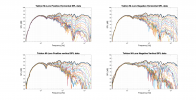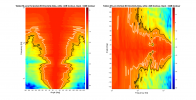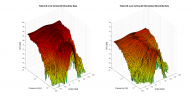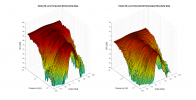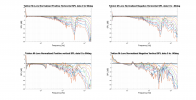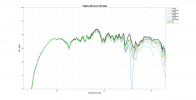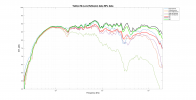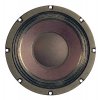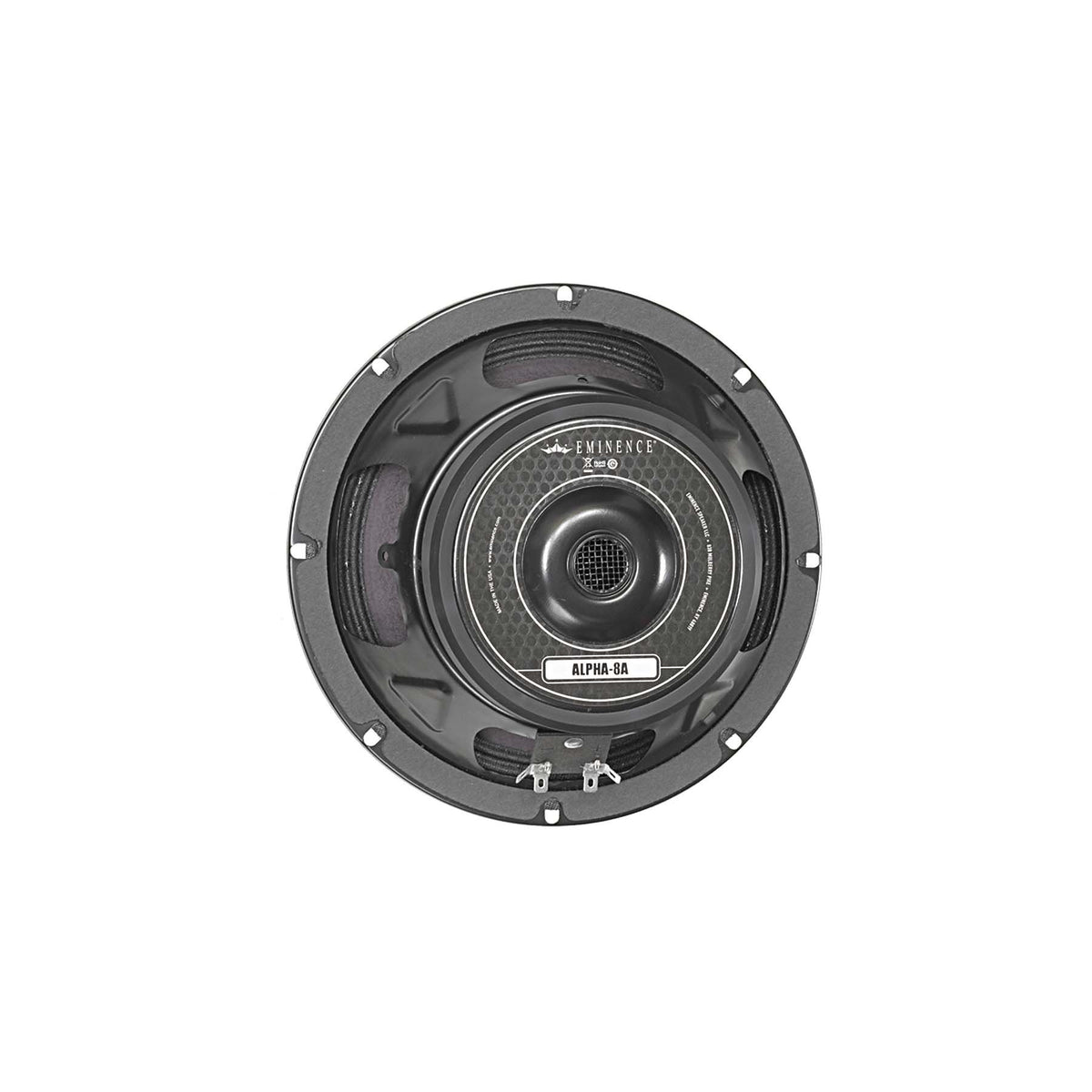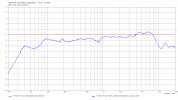This is a review, listening tests, equalization and detailed measurements of the Tekton (Mini) M-Lore speaker. It is on kind loan from a member and costs $US 750 a pair.

As you see, this is a mini-tower speaker if there is such a thing. I had to put a 6 inch stand under it to get the tweeter to my ear height. There is nothing on the back side other than binding post. Not even a label.
Speaker was measured using Klippel Near-field Scanner. Tweeter center was used as acoustic reference (but see edit below).
EDIT: Company has post a formal response on his channel about my review:
Tekton M-Lore Speaker Measurements
Let's start with our usual anechoic measurements:

Boy, that is a pretty chewed up response. It is not terrible at high level but there are a ton of variations across the full audible band. We also have directivity error due to high crossover point and mistmatch of sizes of tweeter/woofer without a waveguide for the former. Sensitivity is a couple of dBs higher than a bookshelf speaker but also that much lower than a typical tower speaker. It has a very uneven response.
Master EDIT On April 19th: I made an updated thread on the new measurements. See: https://www.audiosciencereview.com/...kton-m-lore-speaker-measurement-update.53899/
-------------------------
EDIT: Company has stated that the reference axis is woofer, not the tweeter. I have explained that this makes little difference but he insists. Since Klippel NFS fully captures the sound field of the speaker, we can simply instruct it to assume a different reference point. I don't have exact measurements of the woofer center to tweeter distance so guessed about 5 inches [Now 6.5 inches per company]. If there is a difference, this should show it. This is the comparison of the two setups:

By default Klippel assigns the reference point same as tweeter axis. That is the 3-D plot on the left. On the right, you can see that I have moved up the reference point above tweeter (red point below). Here is the comparison of the two anechoic measurements:

As predicted, there is essentially no difference. Tiny bit of change is expected around 3 to 5 kHz but that doesn't in any way change the overall picture of this speaker's response.
Please note that the company specifications claim "extremely linear" response:

Neither reference axis gets the speaker to have a linear (flat) response. As an aside, spec above says sensitivity is 95 dBSPL. Measured bass sensitivity is much lower at a peak of 88 dB. Rest of the response averages to more or less same value. Realizing that many companies exaggerate this number, I am not making a big deal out of it but we are way off from company's claimed specifications.
As of this date, April 11, 2024, despite promising otherwise, company has NOT provided any measurements of any kind for this speaker. I have repeatedly asked Eric Alexander, company founder and designer, both in emails and in this thread to do so but he has refused. Yet, he has demanded that I delete the review or he would litigate against me and ask for damages. Until such time that he proves with measurements that he has a case, this review will stand.
------------------------------
We can see the source of variations in near-field driver responses:

Combine the rough on-axis response with poor directivity and the off-axis response becomes that much worse:

Resulting in rather poor predicted in-room response:

Directivity as noted is poor:



The larger speaker and drivers do provide an advantage in power handling relative to a bookshelf speaker:

Careful in analyzing the absolute distortion levels due to frequency response variations:

I ran a 10 dB set of sweeps to see if there is limiting and found one right at 105 dBSPL -- plenty good enough:

Speaker did sound fairly distorted though at 105 dB (although not breaking up).
Impedance is rather high which is good as far as stress on the amplifier:

We see a couple of clear resonances and more of them in the waterfall graph:

And the step response:

Tekton M-Lore Listening Tests
I had measured the speaker a week ago so they were not fresh in my mind. It took all of 3 seconds to realize something is wrong with the response with sound seemingly coming out of a box. Took out the EQ and went after the boost around 600 to 700 Hz:

That took out the boxiness but the sound was still not right. Filled in the notch in bass and boosted the gap in treble to balance that. Now the sound was more full but boomy so I put in my one correction for room mode I have around 105 Hz. With these in place, the sound was far more full and balanced. Male vocals sounded terrible without it.
Sub-bass response was decent. There was some distortion but it was trying to play it -- something most bookshelves can't do. I turned up the volume some and could not detect an immediate limit/break up.
All in all, the sound went from lousy to OK/good.
Conclusions
The objective failures of the Mini Lore are pretty obvious. While the speaker is a decade old (?), all of this was known then as well as now. The flaws directly translated to subjective listening tests presenting an unpleasant, boosted upper bass, lower treble. Equalization helped a lot but there are many more faults than my attempt there. The main positive here is the larger cabinet relative to a bookshelf speaker allowing higher dynamics and a bit more deep bass response. Otherwise, I can't see any redeeming characteristics. I don't know what reference Andrew Robinson had to say this about the speaker:

Competition has little to worry about.
I can't recommend the Tekton M-Lore speaker.
EDIT: https://www.audiosciencereview.com/...lore-speaker-review.48732/page-9#post-1880220
A company representative has responded to the review in the thread and I am copying it here:
"What a disservice to the audiophile community. This reviewer does not possess all of the truth in the electro-acoustical universe concerning how loudspeakers should sound - nor do I. I've been blessed to have garnered 18 product of the year awards and it proves I know a thing or two about loudspeakers.
First, a loudspeaker can be designed from a viewpoint of rigid science [what this website looks to be all about] or it can be designed from a viewpoint of art and creativity. In my opinion, a great loudspeaker should have a beautiful balance of science and art. Think of what a mastering engineer could do to a song! A mastering engineer is both an artist and a scientist. Good loudspeaker design must be approached from an identical viewpoint; no different than a mastering engineer producing a track of music - I make the loudspeaker sound exactly how I want it to.
Second, to assume I cannot design and market a 'flat responding' loudspeaker is woefully shortsighted. If I wanted to produce a linear loudspeaker (as the reviewer has turned my design into) I would have done that; my simulator does this task in under 3 seconds. The facts are most audiophiles don't go for the frequency response and corrections the reviewer has suggested. The only linear loudspeaker models we offer are intended for professional studio engineering and they are tools for a toolbox. Changing crossover parts values to flatten the frequency response is a super simple task; my job is to get the speaker sounding right for an audiophile. The problem is most audiophiles don't go for 'scientific sound'; to my ears, it's analytical, sterile, forward in the midrange when turned up, and frankly not much excitement to be discerned. Shipping the Mini Lore with a MiniDSP and a preloaded file converting the Mini Lore into a scientific masterpiece is no more difficult than changing a few values on the crossover.
Anyone wanting an improved version of the Mini Lore pair as the scientific reviewer has suggested my model be changed into is free to call me and I will accommodate your request.
Tekton Design caters to the audiophile community and when two pairs of Mini Lore's were returned in 2023 we must be doing something right with the design.
Respectfully, Eric Alexander - audio designer and owner of Tekton Design, LLC"
Published Manufacturers Specifications:
----------
As always, questions, comments, recommendations, etc. are welcome. Click here if you have some audio gear you want me to test.
Any donations are much appreciated using: https://www.audiosciencereview.com/forum/index.php?threads/how-to-support-audio-science-review.8150/
As you see, this is a mini-tower speaker if there is such a thing. I had to put a 6 inch stand under it to get the tweeter to my ear height. There is nothing on the back side other than binding post. Not even a label.
Speaker was measured using Klippel Near-field Scanner. Tweeter center was used as acoustic reference (but see edit below).
EDIT: Company has post a formal response on his channel about my review:
Tekton M-Lore Speaker Measurements
Let's start with our usual anechoic measurements:
Boy, that is a pretty chewed up response. It is not terrible at high level but there are a ton of variations across the full audible band. We also have directivity error due to high crossover point and mistmatch of sizes of tweeter/woofer without a waveguide for the former. Sensitivity is a couple of dBs higher than a bookshelf speaker but also that much lower than a typical tower speaker. It has a very uneven response.
Master EDIT On April 19th: I made an updated thread on the new measurements. See: https://www.audiosciencereview.com/...kton-m-lore-speaker-measurement-update.53899/
-------------------------
EDIT: Company has stated that the reference axis is woofer, not the tweeter. I have explained that this makes little difference but he insists. Since Klippel NFS fully captures the sound field of the speaker, we can simply instruct it to assume a different reference point. I don't have exact measurements of the woofer center to tweeter distance so guessed about 5 inches [Now 6.5 inches per company]. If there is a difference, this should show it. This is the comparison of the two setups:
By default Klippel assigns the reference point same as tweeter axis. That is the 3-D plot on the left. On the right, you can see that I have moved up the reference point above tweeter (red point below). Here is the comparison of the two anechoic measurements:
As predicted, there is essentially no difference. Tiny bit of change is expected around 3 to 5 kHz but that doesn't in any way change the overall picture of this speaker's response.
Please note that the company specifications claim "extremely linear" response:
Neither reference axis gets the speaker to have a linear (flat) response. As an aside, spec above says sensitivity is 95 dBSPL. Measured bass sensitivity is much lower at a peak of 88 dB. Rest of the response averages to more or less same value. Realizing that many companies exaggerate this number, I am not making a big deal out of it but we are way off from company's claimed specifications.
As of this date, April 11, 2024, despite promising otherwise, company has NOT provided any measurements of any kind for this speaker. I have repeatedly asked Eric Alexander, company founder and designer, both in emails and in this thread to do so but he has refused. Yet, he has demanded that I delete the review or he would litigate against me and ask for damages. Until such time that he proves with measurements that he has a case, this review will stand.
------------------------------
We can see the source of variations in near-field driver responses:
Combine the rough on-axis response with poor directivity and the off-axis response becomes that much worse:
Resulting in rather poor predicted in-room response:
Directivity as noted is poor:
The larger speaker and drivers do provide an advantage in power handling relative to a bookshelf speaker:
Careful in analyzing the absolute distortion levels due to frequency response variations:
I ran a 10 dB set of sweeps to see if there is limiting and found one right at 105 dBSPL -- plenty good enough:
Speaker did sound fairly distorted though at 105 dB (although not breaking up).
Impedance is rather high which is good as far as stress on the amplifier:
We see a couple of clear resonances and more of them in the waterfall graph:
And the step response:
Tekton M-Lore Listening Tests
I had measured the speaker a week ago so they were not fresh in my mind. It took all of 3 seconds to realize something is wrong with the response with sound seemingly coming out of a box. Took out the EQ and went after the boost around 600 to 700 Hz:
That took out the boxiness but the sound was still not right. Filled in the notch in bass and boosted the gap in treble to balance that. Now the sound was more full but boomy so I put in my one correction for room mode I have around 105 Hz. With these in place, the sound was far more full and balanced. Male vocals sounded terrible without it.
Sub-bass response was decent. There was some distortion but it was trying to play it -- something most bookshelves can't do. I turned up the volume some and could not detect an immediate limit/break up.
All in all, the sound went from lousy to OK/good.
Conclusions
The objective failures of the Mini Lore are pretty obvious. While the speaker is a decade old (?), all of this was known then as well as now. The flaws directly translated to subjective listening tests presenting an unpleasant, boosted upper bass, lower treble. Equalization helped a lot but there are many more faults than my attempt there. The main positive here is the larger cabinet relative to a bookshelf speaker allowing higher dynamics and a bit more deep bass response. Otherwise, I can't see any redeeming characteristics. I don't know what reference Andrew Robinson had to say this about the speaker:
Competition has little to worry about.
I can't recommend the Tekton M-Lore speaker.
EDIT: https://www.audiosciencereview.com/...lore-speaker-review.48732/page-9#post-1880220
A company representative has responded to the review in the thread and I am copying it here:
"What a disservice to the audiophile community. This reviewer does not possess all of the truth in the electro-acoustical universe concerning how loudspeakers should sound - nor do I. I've been blessed to have garnered 18 product of the year awards and it proves I know a thing or two about loudspeakers.
First, a loudspeaker can be designed from a viewpoint of rigid science [what this website looks to be all about] or it can be designed from a viewpoint of art and creativity. In my opinion, a great loudspeaker should have a beautiful balance of science and art. Think of what a mastering engineer could do to a song! A mastering engineer is both an artist and a scientist. Good loudspeaker design must be approached from an identical viewpoint; no different than a mastering engineer producing a track of music - I make the loudspeaker sound exactly how I want it to.
Second, to assume I cannot design and market a 'flat responding' loudspeaker is woefully shortsighted. If I wanted to produce a linear loudspeaker (as the reviewer has turned my design into) I would have done that; my simulator does this task in under 3 seconds. The facts are most audiophiles don't go for the frequency response and corrections the reviewer has suggested. The only linear loudspeaker models we offer are intended for professional studio engineering and they are tools for a toolbox. Changing crossover parts values to flatten the frequency response is a super simple task; my job is to get the speaker sounding right for an audiophile. The problem is most audiophiles don't go for 'scientific sound'; to my ears, it's analytical, sterile, forward in the midrange when turned up, and frankly not much excitement to be discerned. Shipping the Mini Lore with a MiniDSP and a preloaded file converting the Mini Lore into a scientific masterpiece is no more difficult than changing a few values on the crossover.
Anyone wanting an improved version of the Mini Lore pair as the scientific reviewer has suggested my model be changed into is free to call me and I will accommodate your request.
Tekton Design caters to the audiophile community and when two pairs of Mini Lore's were returned in 2023 we must be doing something right with the design.
Respectfully, Eric Alexander - audio designer and owner of Tekton Design, LLC"
Published Manufacturers Specifications:
- Perfect impulse time-alignment
- 8″ woofer
- 1″ silk soft dome tweeter
- 8 Ohm impedance
- Frequency Response 38Hz-20kHz
- 95dB 1W@1m
- 200 Watts power handling
- Height 34″ (86.36 cm) x Width 9.125″ (23.17 cm) x Depth 10″ (25.4 cm)
- Weight 35 lbs.
- Manufactured in the USA
----------
As always, questions, comments, recommendations, etc. are welcome. Click here if you have some audio gear you want me to test.
Any donations are much appreciated using: https://www.audiosciencereview.com/forum/index.php?threads/how-to-support-audio-science-review.8150/
Attachments
Last edited:
